Do dog harnesses really cause pulling on leash? Let’s debunk this myth!
Have you ever heard the claim that dog harnesses cause pulling? I recently received this comment on one of my Youtube leash training tutorials:
“You can always tell the quality of a dog trainer by whether they recommend using a harness. Think about it: they’re suggesting a training tool that literally causes dogs to pull. How could you trust anything else they say afterwards?”
Is that actually true though? Do harnesses cause dogs to pull on leash?
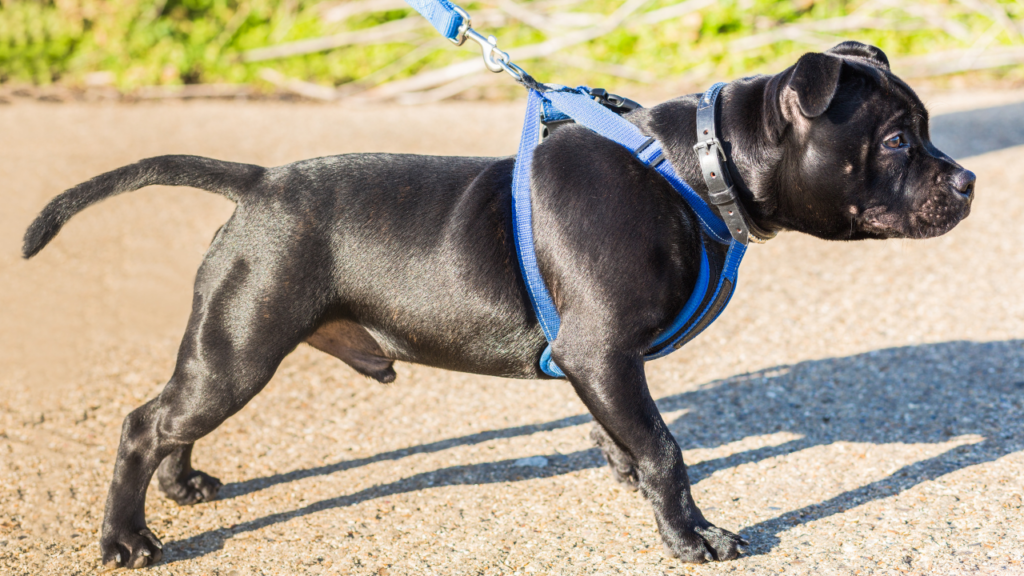
Let me ask you this:
Do running shoes CAUSE you to run??
When running shoes touch your feet, do you just spontaneously start running?
No, obviously not.
Running shoes are a comfortable and safe option if you are going to go for a run, but they don’t make you run.
That’s a vast difference.
Saying that a dog harness causes pulling is as silly as saying running shoes make you run.

Dog harnesses are a safety tool, not a training solution
Let’s be clear: Harnesses do not cause pulling on leash, but they do make it safer and more comfortable for dogs that already pull.
Think of your dog’s harness like your running shoes—the harness is meant to keep your dog safe and comfortable, not magically change their behaviour.
If a dog pulls on leash while wearing a harness there will be much less pressure on their sensitive throat than if they were wearing a collar. I encourage thinking of the harness as a safety tool, not as a training solution.
The real question we should be asking is:
Why Do Dogs Pull on Leash?
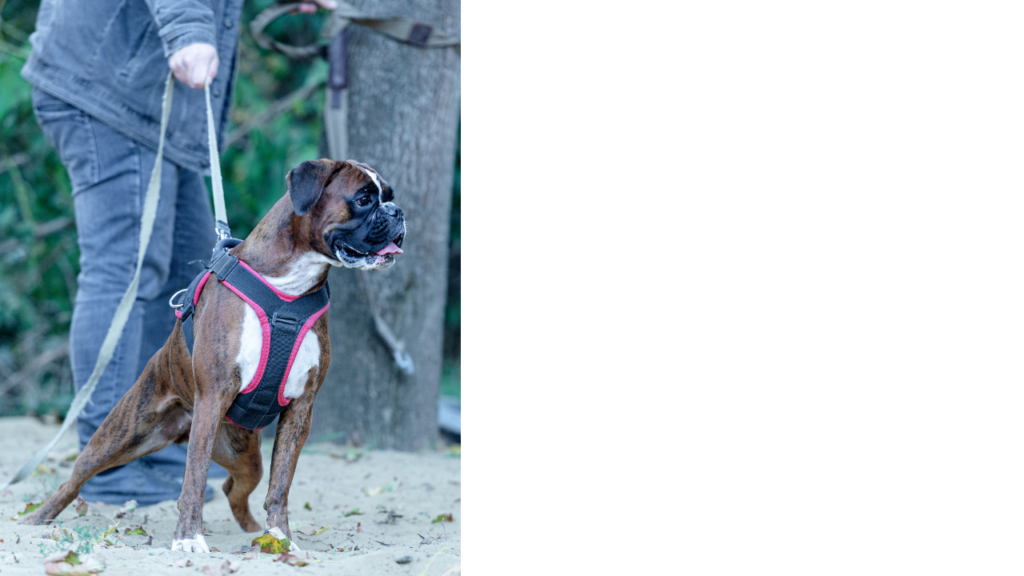
If the harness isn’t the problem, then what’s the real cause of leash pulling?
Dogs pull on leash for lots of reasons. Here are a few common ones:
- Lack of exercise: Does your dog have lots of pent up energy? They’re going to want to move quickly to burn some of that off.
- Overexcitement: There’s so much to sniff, see, and explore.
- Prey drive: That squirrel in the distance is calling their name. (Check out my rewards-based prey drive training solution here if you’re struggling with animal chasing).
- Pulling towards smells: Our main sense is sight, but dogs is smell. You enjoy looking at beautiful views while walking, right? Interesting scents are like a beautiful view to dogs.
- Mismatched pace: Dogs aren’t naturally inclined to walk in a straight line at a consistent pace like we do. Off-leash dogs tend to zoom around, stop to sniff, then zoom some more. When we try to walk them on leash, we’re essentially asking them to walk more like us—and that’s not easy for them!
We we say we want our dog to “walk nicely on leash” we’re essentially saying “walk more like us”. That’s where fair and proper leash training comes in.
The REAL Solution for Pulling on Leash: Training
So, how do you fix pulling on leash?
In very simple terms, you have two options to change a dogs behaviour:
- Reward the behaviour you want: You can reward your dog when they walk without pulling. The reward encourages them to repeat that desirable behaviour.
- Punish the behaviour you dislike: You can discourage pulling by using punishment such as leash pops, choke chains, or prong collars. [Please remember what I said earlier though: dogs do not naturally walk the same way we do! So, why would we punish a dog for literally just walking like a dog? That’s not fair, and it’s not necessary. I strongly encourage using only kind, force free dog training methods for leash training]
Importantly: Neutral inputs—like a harness—don’t meet either of these requirements for behaviour change. A harness doesn’t reward pulling, nor does it punish it. It’s neutral, and neutral doesn’t change behaviour. This is why I refer to dog harnesses as a safety tool, not a training solution.
Instead, Set Your Dog Up for Success:
As a force-free dog trainer, I don’t rely on equipment the dog wears to change a dog’s behaviour. Instead, I focus on teaching the dog a foundation of skills, then we practice those skills in progressively harder scenarios that still allow the dog to be successful. I often joke:
We can’t expect university-level leash skills if we’ve never even taught the dog kindergarten-level behaviour!
Start by setting your dog up for success. Practice in low-distraction areas where they’re more likely to succeed. Use positive reinforcement—treats, toys, praise—to reward them for walking nicely. Then gradually increase the difficulty of your training as they improve.
Don’t expect a magic fix—training takes time, and it’s important to match your expectations with your dog’s current skill level.
Harness = Safety Belt, Not Steering Wheel
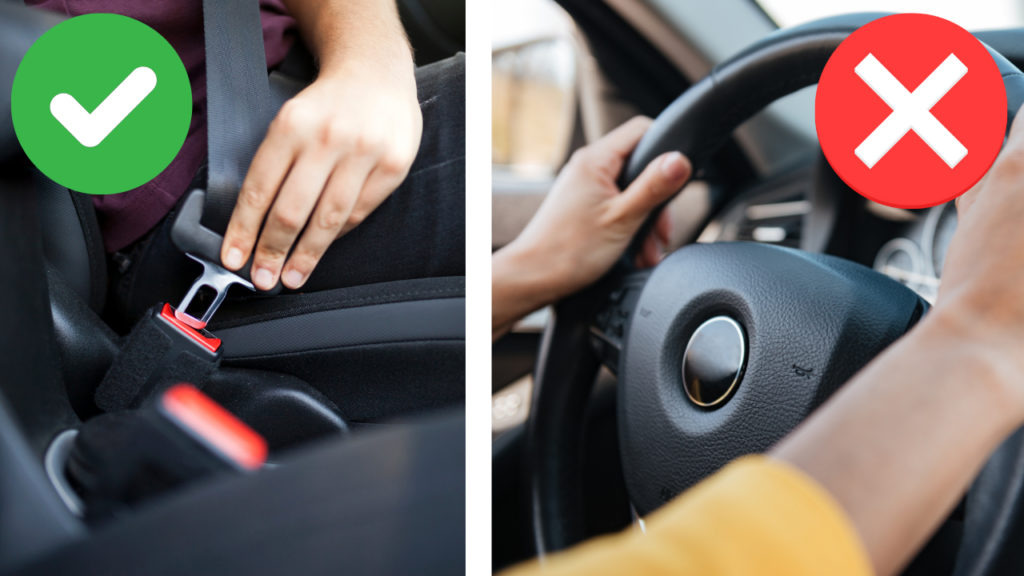
Think of your dog’s harness as a safety belt rather than a steering wheel. The harness and leash are simply there to keep your dog safe during training—just in case something unexpected happens. They aren’t there to steer your dog’s behaviour, but rather to ensure that your dog remains safe while they’re learning.
Remember: The harness doesn’t cause pulling, but it won’t fix it either.
It’s just a tool that keeps your dog safe while they’re learning how to walk nicely on leash.
The Bottom Line
Rest assured, a harness won’t magically turn your dog into a sled dog, just like running shoes won’t magically turn you into a marathoner. If your dog is pulling on leash, it’s not because of the harness, but because they haven’t yet learned the right walking skills.
Are you unsure how to teach your dog leash skills?
If you want a complete program that explains exactly what skills to teach your dog and in which order for the best leash training results, you can check out my leash training guide HERE. It provides a step-by-step training plan that you can easily follow at home.

Happy training, I’ll see you in the next blog post!
Disclosure: Happy Hounds uses affiliate links. Purchasing with these links will not cost you any extra, but I get commissions for purchases made through these links. Affiliate links help me to continue to offer free resources & blog posts. I would love if you used them!
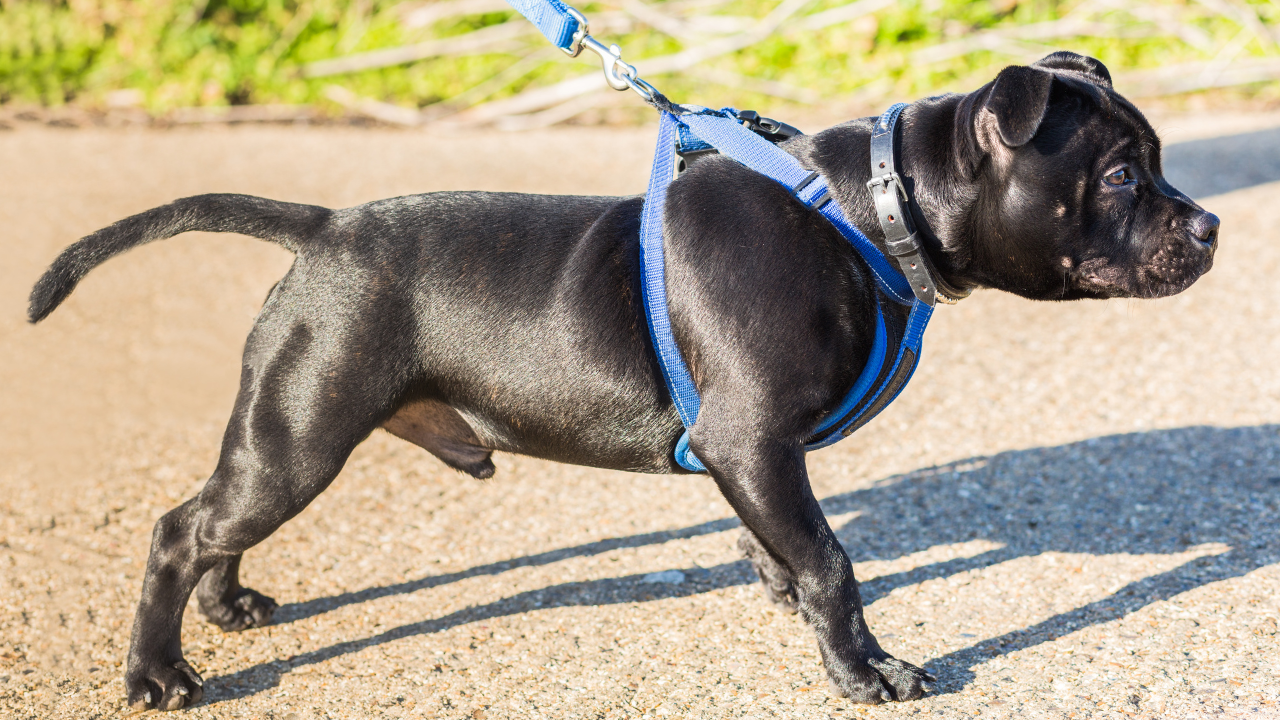
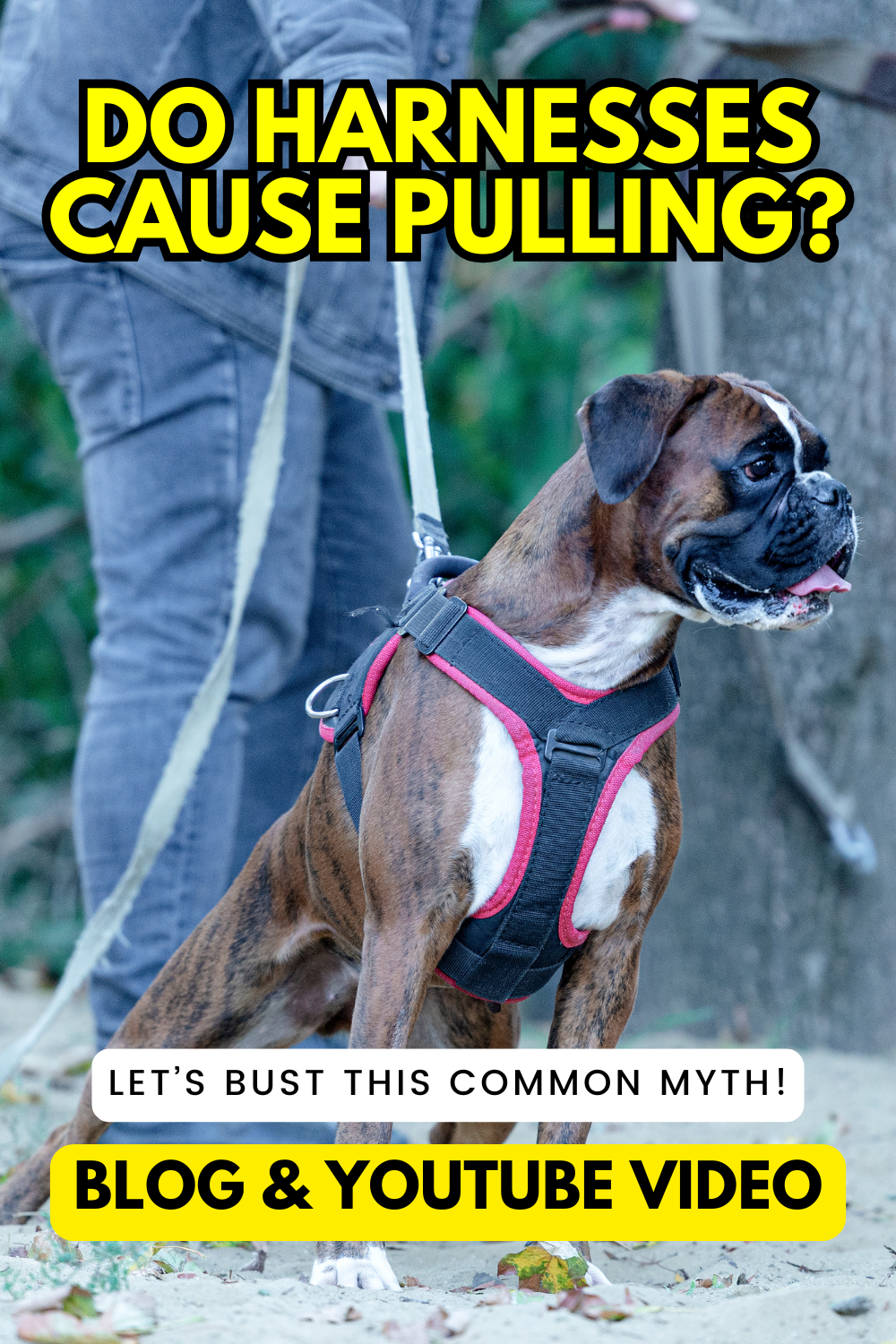
+ show Comments
- Hide Comments
add a comment